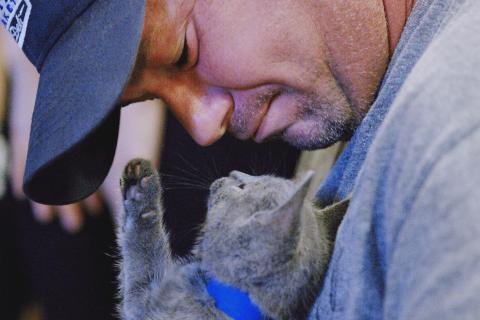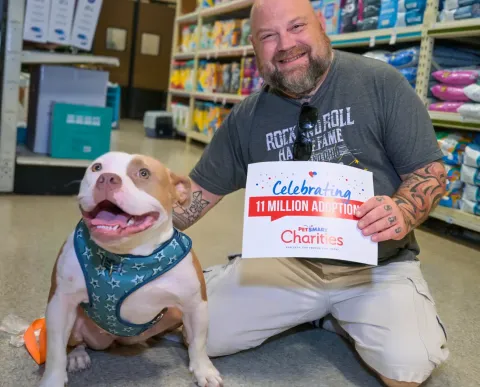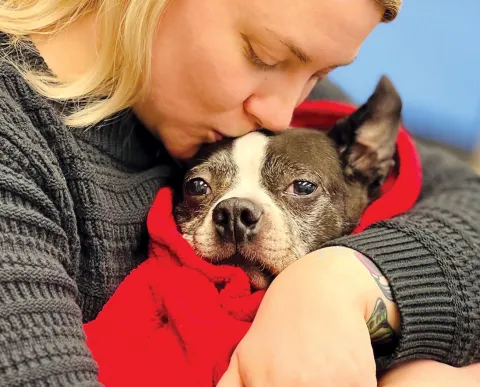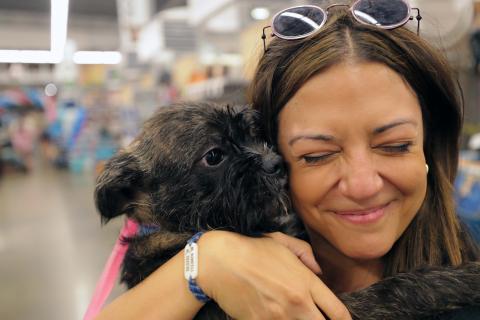“Breaking News” is apparently a notification on my iPhone that comes as a default setting. I haven’t intentionally set it up as a function nor have I invested the effort in turning it off – so it continues to remind me of some big version of news that is happening in the country. As a society, we're accustomed to real-time news. Twitter, Facebook, news that targets you because of your online behavior, and of course the visual stimulation of TV media stories about whatever is occurring, all create this instant knowledge of current events. While many people see this as a negative (and, of course, there is a risk that the news could be wrong or over-amplifying a situation) I have seen it serve as a positive as well.
For instance, when impending storms hit, news outlets across the board turn into a Mach-9 approach to cover the pre-storm, midst-of-storm, and post-storm happenings. This helps people prepare, understand the current state of evacuations, and helps people outside of the affected areas understand what their fellow Americans may be experiencing. The positive beyond that? These disasters inspire people to act and the best of humanity can come to life when there is a rallying cry to help others who are suffering.
When helping can hurt
It was hard for many people to watch the news as Hurricane Harvey dropped record rainfall and not want to rise to action; or when Irma’s size grew to engulf the full width of Florida and not want to rush to help; or when all of Puerto Rico lost power, water, and other services and not want to ship emergency items immediately to meet the need. And, more recently, watching the flooding and destruction in the Carolinas from Hurricane Florence reminds of the vivid images of last year, re-inspiring the desire to make a difference.
I don’t want to tell you this but I must: sometimes “helping” is hurting
What does that mean? It means that just because we want to help and have an idea about how to help does not mean that it is what is most helpful in that situation. Let’s review two scenarios as examples of how the best intentions during a crisis can yield unintended consequences.
Scenario One: Kind-hearted person watches the news and feels sadness for the people suffering during and after Hurricane Irma. Kind-hearted person decides they want to help and organizes a supplies drive at a local store. Kind-hearted person loads their SUV full of these donated supplies and drives to Florida to drop off the many, many supplies. Feeling immensely proud of their efforts, they make their way to a severely impacted area, the Florida Keys. It’s a long drive and Kind-hearted person must stop for gas several times, waiting in long lines because gas is scarce for everyone, including those who need to run their generators to have basic power. As Kind-Hearted person drives route 1, they are stopped by emergency operations professionals who tell Kind-hearted person that route 1 is closed south of the main peninsula and they cannot deliver these supplies to the Keys. Kind-hearted person is offended by this but turns around and tries to find a place to stay. Kind-hearted person finds one hotel in the area that has a room left, but that means the family behind Kind-hearted person in line does not get the room. Kind-hearted person does not know this but that family lost their home to the storm and now will be forced to fight the gas lines and traffic to see if they can find a different room somewhere else in the state. Eventually, Kind-hearted person finds a “Donation Receiving Center” where they can drop their supplies. What Kind-hearted person does not know is that all emergency professionals are busy helping with emergent needs and these supplies will sit for some time. In fact, most times, donations that are received in an unplanned, uncoordinated one-off circumstance will spoil before usage. Kind-hearted person drives back home feeling that they have helped when in effect they have used valuable gasoline that is scarce, consumed a lodging room that could have served a victim, and left a pile of supplies that has no plan, no destination, and likely will create follow up work for someone after the emergent needs from the storm are met. It was never Kind-hearted person’s intention to “hurt” in these ways but the effect of their efforts did not meet their desires to help.
Scenario Two: Team Do-Good has been working on their disaster response training for some time and have not seen a real disaster in their area during that time. So, as they watch the Weather Channel from the comforts of their homes, they see Hurricane Harvey wreaking havoc on southeast Texas. Team Do-Good starts a group text and decides to mobilize. They grab their “Go-Bags,” load into vehicles to drive to Houston. Team Do-Good has not been requested by Houston or any other municipality or county, or any organization, for that matter, to respond. Team Do-Good is what the emergency management sector calls “self-deployers.” Now, Team Do-Good is highly trained and effective in their work so, at face value, it feels like the right idea to deploy to help. However, like Kind-hearted person, their drive into Texas consumes valuable fuel needed by others in distress. In addition, they have several vehicles carrying a full team of people. That team needs food, lodging, and potentially other vehicles or tools to be able to serve. Team Do-Good tries to find an organization that needs them or a city that wants extra volunteers but they have no mission number (an official number given out by emergency operations incident command) so every time they try to make their way into an impacted area, law enforcement or other first responders are forced to tell them they can’t pass. It’s easy to see how this is frustrating for Team Do-Good but what might not be easy to see is that every time a first responder stops to talk with Team Do-Good, they are being distracted from their primary work. Meanwhile, if Team Do-Good is able to find food and lodging, they are, in fact, consuming resources that designated or assigned first responders need to be able to do their work. Team Do-Good stays in the area without an assignment for several days and, frustrated, leave for home without being able to match their effort with their intention.
For those not regularly working in emergency situations, these scenarios may seem far-fetched but I can assure you they are not. In every large-scale disaster, there are a host of individuals and teams who self-deploy or feel that good intentions will overcome any obstacle. Responding to disasters is a highly structured systemic approach to work. Each layer of the response team, whether in a command center or in the field, knows exactly the role that they play and functions according to the system because that system is the only thing that keeps the chaos in a disaster from overtaking everything. That highly coordinated structure allows for response to happen in an impactful way. Help in any form that occurs outside of the structure actually serves as a threat to the positive impact and response and therefore is often not able to be received; disappointing many very well-intentioned, kind-hearted, action-oriented people who just want to make a difference.
What does help look like?
While I know these scenarios may feel disheartening, please know there is great news in that you absolutely can help and you can make a difference. You can be part of the solution, here is a list of ways your good intentions can be received and effectively used:
-
Cash is King: Giving money to reputable organizations that serve in disaster scenarios is the single best way to have an immediate and effective impact on those in need. Monetary donations can support sending requested or designated teams to the impacted area through official channels. It can support truckloads of food. It can support clean-up kits, meals for first responders, medical supplies, shelters for humans or pets and more. While I can understand that it can feel less action-oriented, it is the most efficient way to help without creating a drain on resources in the affected areas. And, in my opinion, the best part is that your gift goes further than you might ever imagine. Use PetSmart Charities as an example; whether you give a dollar at the checkout at a PetSmart store or you mail in a $1,000 check, all of the donated dollars are pooled into a cooperative opportunity to influence change. The collective power of all of the donors allows PetSmart Charities to provide aid, fund relief work, and save pets in meaningful ways. Your donation turned into $4.3 million in donations to relief efforts last year. And, please don’t worry, PetSmart Charities has a policy to only fund designated responding agencies (not self-deployers) so we are ensuring that your gift only supports the most helpful efforts.
-
Become a trained volunteer for a designated responding agency: There are many groups that serve humans (like the American Red Cross and others) and groups that serve pets (like NARSC and others) that offer training for action-oriented disaster response. Once you complete training, and if your schedule allows, you may be called upon to travel to an affected area to be a responder, or you may staff a call-center, or you may facilitate other volunteers who are helping. The list of potential roles is nearly limitless but it does take the commitment of training with a national, regional, or local designated response agency to be able to serve efficiently and effectively without created unintended negative consequences.
-
Foster Pets: It’s very typical in the preparation phase for a disaster that animal shelters will relocate their shelter population outside of the area to be hit. They move these shelter pets so they can make room for stray owned pets displaced because of the storm. They will partner with other shelters or rescue organizations outside of the impact who are willing to manage the relocated population. By becoming a foster for these relocated pets, you help three parties. You help the shelter managing the relocated population, you help the shelter who needed to move them outside of the impacted area, and you help the pet and/or their family who needs the emergency shelter space because of the disaster.
-
Adopt: Consider opening your home to an animal displaced by a storm, or better yet, an animal from the shelter near you that has agreed to take in disaster evacuees. Last year after Hurricane Harvey, the PetSmart Charities National Adoption Weekend in September broke the standing record and over 30,000 animals were adopted.
-
Teach others about not-self deploying: I know this sounds silly but the more people who understand that good intentions alone won’t yield their desired effect, the more effective disaster response will become. Knowledge is power and if you spread this particular knowledge and the positive message of the ways they can be helpful, you create a powerful shift from the way many people think today.
-
Prepare your own pets and families: The first article in this series covered how to prepare your pets in case of disaster. There is an immense efficiency gained during a disaster response effort when the majority of potential victims are well prepared and therefore never have to be victimized.
Help is on the way
As a part of my daily routine during hurricane season, I check the National Hurricane Center’s advisories on storms, in part because I have my husband in the back of my head saying “overprepare to be underwhelmed and underprepare to be overwhelmed.” For you, “Breaking News” may feel sufficient. Whatever your choice for understanding the potential of disastrous storms, wildfires, etc., with these tips on how to help, you can feel confident that your efforts can match your intentions. Your desire to make a difference can and will be leveraged into the most comforting words a victim in crisis can hear: “help is on the way."











